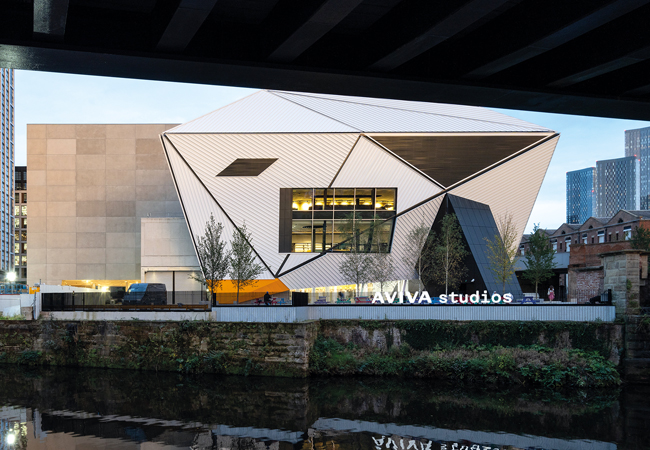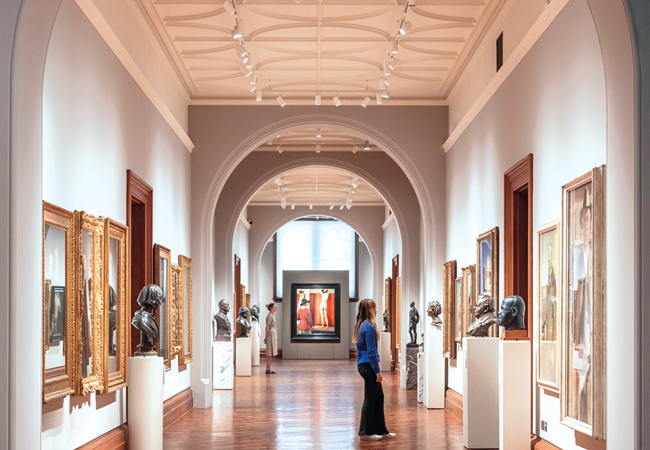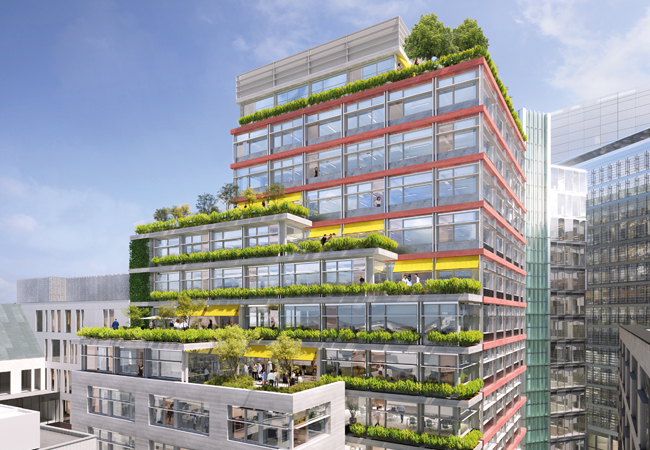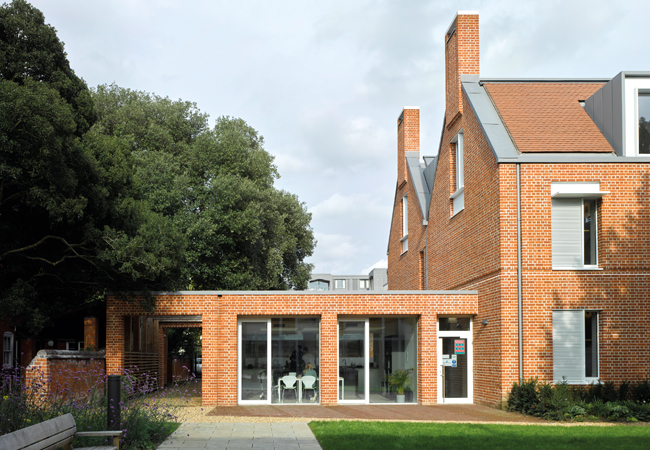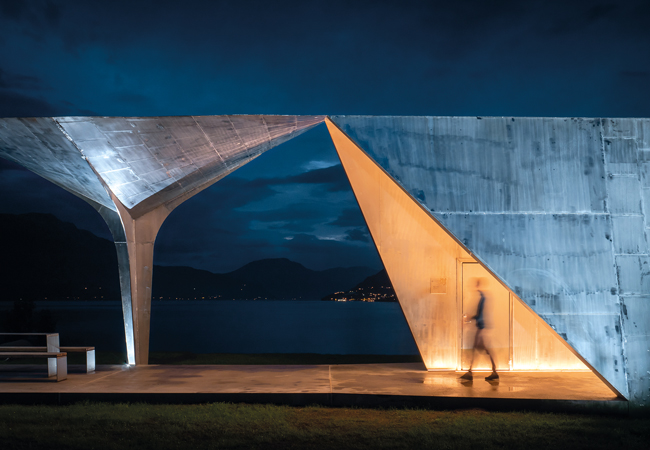
The roof and wall surfaces are made from 6mm-thick steel plates
Espenes is a rest stop on a scenic route along Sørfjorden, a 38km-long fjord on the road between Kinsarvik and Odda in northern Norway. Designed by Code Arkitektur as part of the Norwegian Scenic Routes initiative, the new structure for hikers and visitors sits in a powerful landscape with a stunning view of the fjord and mountains.
Measuring 64m long and 4m wide, and with 12 roof modules of varying heights, the stainless steel structure houses toilets and seating. The elegant, simple geometry of the design is unashamedly contemporary, but created to complement, rather than compete with, its surroundings.
‘The double-curved roof construction has a horizontal roof line, which is a reference to the fjord, and an undulating roof line, which is a reference to the mountainsides,’ says Code Arkitektur. ‘When you rest under the vaults, you experience different sections of the landscape space, together with the changing reflections of the light in the steel.’
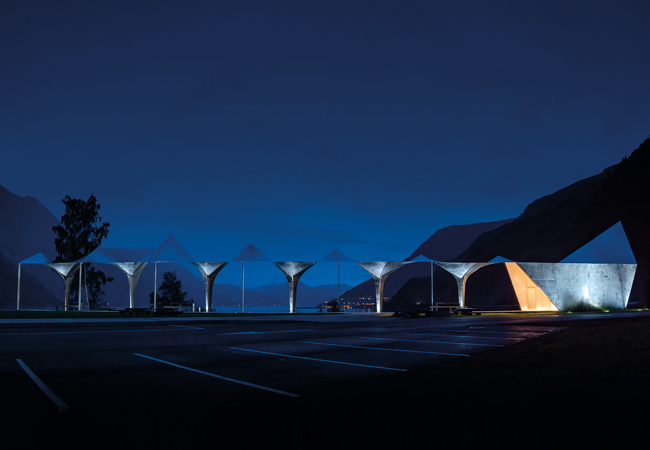
The rest stop is designed to both integrate and contrast with nature
The lit effect at night follows similar principles. ‘We set out to create a visible landmark after dark, in tune with the local landscape,’ explains Light Bureau’s UK design director, Arve Olsen. ‘Our lighting design is inspired by the location and the surrounding nature: the cool moonlight that illuminates the mountain tops and the nearby glacier, in contrast to the warm, human light.’
The roof and wall surfaces are shaped by hand and welded together from 6mm-thick steel plates. The steel walls are kept free of equipment and all technical installations are cast into the concrete deck. Cool and warm light is used to create a clear distinction between the indoor and outdoor spaces, the columns, in cool light, framing the view towards the toilet, in warm light.
The intensity of the light on the steel wall had to be experienced visually. Therefore, tests were crucial
‘The cool light of the outer walls is designed to contrast with the warm interior,’ says Olsen. ‘As lighting designers, we aimed to accentuate the sculptural shape through an interplay of light, darkness and contrast in the colour temperature.’
The lighting of the ceiling surface is asymmetrically designed to give two different visual impressions depending on the direction from which it is viewed, while the reflections in the steel create a play of light. ‘The intensity of the light on the steel wall had to be experienced visually,’ explains Olsen. ‘Therefore, tests were crucial, to ensure good detailing and to see the actual effects of light.’
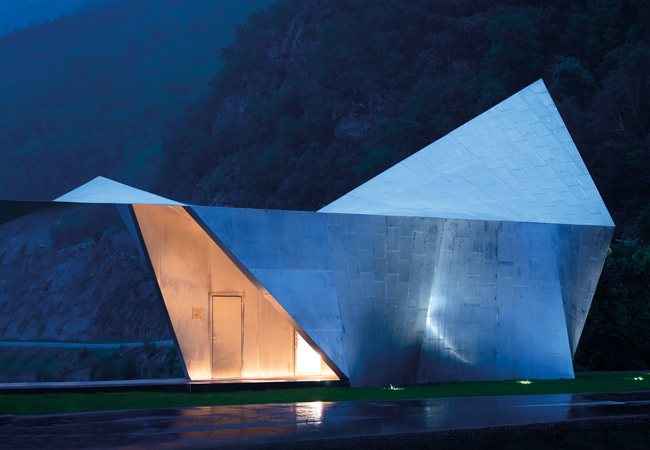
The cool light of the exterior walls contrasts with the warm interior light
The luminaires are discreetly moulded into the deck and integrated into door frames. To achieve functional lighting in the toilets, each cubicle is equipped with a special bollard, in steel and acrylic – produced by the metal workshop Størksen in collaboration with UK company Stoane Lighting – which acts as a floor lamp and provides a soft light in the room.
The light from the bollard balances with the light in the door frame, which is made of steel and hardened glass. The lighting is controlled by sunrise and sunset times, as well as sensors in the lock box on the toilet doors, so that the light intensity increases when the toilet is in use. ‘This limits energy consumption and unnecessary lighting when the rest stop is not in active use, and lets the fjord and mountains set the stage,’ says Olsen.
The light levels are generally dimmed to limit the impact on the surroundings and local ecology, and to minimise glare, preserving the view from the rest stop. The remaining architectural lighting is balanced against the dimly lit roof – less than 40W is used to illuminate the 50m-long roofline.
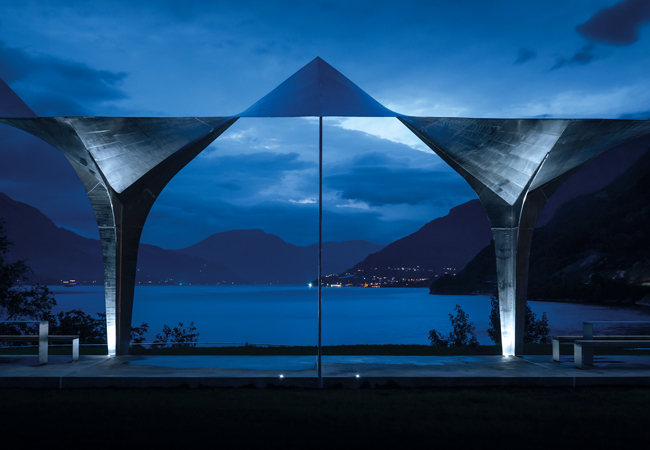
The undulating roofline is a nod to the surrounding mountains
In fact, the scheme is as much about what is not lit as what is. The road that leads to the rest stop is not illuminated and the lighting of the rest stop area is limited to the construction, with darkness also maintained in the car park and access road.
Designed to attract visitors to remote destinations in the country, Norwegian Scenic Routes is a cultural project that unites architects, artists, designers and craftspeople with a common goal of creating destinations across the country through architecture. Along the routes, architectural structures are designed to both integrate and contrast with nature.
The project team
- Lighting design: Light Bureau
- Architecture: Code Arkitektur
- Key suppliers: LightGraphix, Stoane Lighting, Fagerhult, iGuzzini
- The Espenes rest stop won an IALD Award of Excellence 2023, and Platinum and Green in the Build Back Better Awards 2023.



